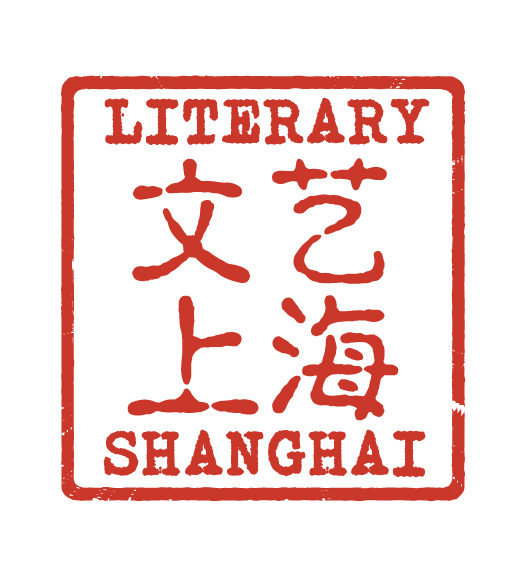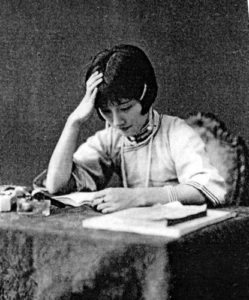REVIEW: ‘A Gap In the Clouds: A New Translation of the Ogura Hyakunin-Isshu’ (Miho Kinnas)
The Ogura Hyakunin-Isshu is one of the most popular poetry collections in classical Japanese literature. Since its reputed compilation by Fujiwara no Teika around 1235, it has been widely read and parodied. Artists produced artworks inspired by the poems, and a card game made in modern times is still played in Japanese homes. The presence of classical poetry stars, including the authors of The Tale of Genji and The Pillow Book, and the protagonist’s model in the Tale of Ise must be one reason for its enormous popularity. The poems chosen are not necessarily the best works of the respective poets, and many have suspected political undercurrents in the selection. Such speculations add more mystery to the collection. The thirteenth century in Japan was a chaotic time in history: the grace and elegance of the aristocratic era, as depicted in these poems, was a thing of the past. Still, as the introduction to this book states, “Poetry was central to life and reputation among the ruling elite of medieval Japan, but these beautiful poems have endured because their themes are universal and readily understood by contemporary readers. They include love, loneliness and mortality, as well as the passage of the seasons and the beauty, of natural phenomena. Many are steeped in the rites and sensibilities of the Shinto religion, with gods to be found in every natural thing.” It is no wonder, therefore, that numerous translations into contemporary Japanese and many other languages along exist, along with annotations. A Gap in the Clouds by James Hadley and Nell Regan is one of the newest efforts.
First, I read A Gap in the Clouds from the beginning to end without any critical thought. I tried to imagine how an average reader new to Hyakunin-Isshu and expecting poetry would find this book. The page layout is artful, and all of the one-hundred poems are very accessible. The book introduces the reader to who a hundred poets were and what type of subjects they dealt with. The translations are consistent with the principles described in the introduction. I thought, maybe, they achieved the goal for the book.
Then, I read the original poems and the contemporary translation with annotations in Japanese to refresh my memory and compare the details. I read classical Japanese to a degree, but the annotation and an “old-word” dictionary are indispensable. I chose a particular book[1] for reference because it is one of the newest translations, and the translator Koike Masayo is a prominent poet and a favourite of mine. Her translations are in free verse. The length varies, and it is a creative translation without going overboard.
The authors of A Gap in the Clouds have worked very diligently to convey the gist of each poem with the constraints as explained clearly in the introduction. I had thought their process was reasonable and understandable at first. I will explain the objections that came to me after having read the books and thought things through.
Quite a few unfortunate grammatical misunderstandings have altered the context.[2] I noticed very puzzling phrases[3] and a ‘prosy’ style of writing in general. It’s possible that while polishing the final output, unintended changes crept in. Some are possibly considered as an alternative interpretation. Such instances are common in translations, and I have no intention of nitpicking. However, one question that kept coming back to this reviewer’s mind was whether this book challenged to claim that poetry was something translatable.
There are some delightful translations. For example, the words “tendril,” “vine,” and “entwined” of #25 (refer to the introduction, please) replicate the tangle of the original very well. #32 contains the phrase “one-by-one,” which doesn’t exist in the original; however, the insertion added animation that works beautifully. #72 also works quite well to replicate the waves, if not its flirtatiousness.
In No. 96, however, the translation conveys the poem’s surface meaning, but certain eroticism is completely lost. The first seventeen sounds of the original describe a garden in intricate language: The play on words on seduction and the snow-storm-blown flower petals constitute a charming adjective for a garden. The written-out translation somehow erases the imagery.
The circumstances under which these poems were written were far more social than a popular image of poets agonising over their lines and diction. These poems were written for greetings, occasions, and competitions. Many were written to show off knowledge of allusions, wonderful metaphors, and witty or irate responses. Some of them mock love affairs. True emotions do exist; some poems are more emotional than technical. Literally, one hundred different voices, attitudes, and backgrounds of the elite class spans about four hundred years are crammed in this anthology.
Overall, this reviewer’s biggest complaint is that the translated poems sound overly monotonous; they do not sound like a hundred poets’ voices. I may be asking for the different level of considerations which may be out of the scope of the authors’ intentions; however, some deconstructions might be interesting to some readers.
Knowledge of the background stories might transform the reading experience of some of the poems. The first example is #60. The last sentence, “So I say,” helps accentuate the author’s strong-headedness. At the end of the book, the note mentions the author is the daughter of Izumi Shikibu, the representative poetess of the classical poetry world. But if a reader knows that this poem was a spontaneous come-back to a man who teased her whether she received advice from her mother who was living in Ama no Hashidate at that time, it might have added more colour to the poem.
#7. It may be a matter of interpretation; however, the two moons the poem deals will heighten its poignancy once a reader knows those two moons belong to the parallel worlds: one being the moon the author sees at night in China; The other moon was the moon of long ago in his hometown where he’d probably never return. In fact, he didn’t return to Japan.
How do you incorporate such backgrounds? You might ask. It must be hard. However, I know an example by Kevin Young, who did this for Basho’s poem.
Look at its shape
the moon is just a young girl
sent to bed[4]
The original poem (miru Kage ya / Mada katanari mo/you zukiyo or 見る影やまだ片なりも宵月夜) doesn’t contain a word “girl” or “bed.”
The translation by Jane Reichhold is:
see its slim shape
it is still not developed
the new moon this night[5]
One more step removed, her literal translation is like this:
see shape <> / still immature /new moon evening [or good]
Basho used Katanari, knowing it was the word used for a girl-child as being “pure” in the Tale of Genji and emphasised the young moon’s elusiveness (You Zuki). You Zuki is a” young new moon that appears only early in the evening and then disappears,” according to Reichhold’s definition. I recognise that haiku and waka are different; David Young offered new translations for the selected haiku, yet his translation made me immediately go to the original poem in Japanese and other translations, and found it satisfying.
I want to discuss pronoun use in a couple of poems. #5 specifies that “I hear a deer cry out.” I noticed it on my first read, and the poet Koike Masayo also writes about the difference between having a person and a deer in the scene. She maintains that the presence of “I” dilutes the poetics of the piece, and “I” might be somewhere, but it functions just as an ear, let the deer cry out, and “I” should remain in hiding. The translation also works just fine without “I hear.”
Likewise, #6 begins with “I cross toward the sky.” By this, the man is placed in a fantasy world. However, the poem deepens when the reader knows the man is awake late into the night and is standing in the cold in the palace as he looked up at the sky, which plays out the legend of Magpie, a bird of black and white like the dark sky and the bright stars. Grammatically, that is how one should read it.
#9 is one of the best-known and most beautiful poems by Ono no Komachi. Regrettably, the use of the “you” personification destroyed the complexity and the atmosphere of this poem. The poem’s focus should be the quiet reflection about the passage of time: The peak-time flower petal is not the only beauty there is to be appreciated. The highly technical sound and the flow of the poem didn’t survive the translation.
As mentioned earlier, those who write and translate poetry constantly wonder whether poetry is a translatable thing – whether it functions when taken out of the world it was written in. Translating into contemporary Japanese is a challenge; translating into a foreign language adds another layer due to the total lack of common knowledge and expectations. Even with contemporary poems, solely translating the text without knowing how the poet’s writing style and viewing things is risky. Needless to say, knowledge of allusions and historical backgrounds are basic requirements. A poet/translator must pack it back into the destination language in a poetically appealing way. It is a humbling exercise. It is the duty of cross-cultural translation to encompass all of those aspects. If the end-product is a beautiful creation inspired by the original poems, but not a translation in the traditional sense, I would love to read it. I am inquisitive about what the step-by-step process of their translation was like.
Miho Kinnas is a Japanese writer and translator of poetry. Math Paper Press of Singapore published “Today, Fish Only” and “Move Over, Bird.” She grew up playing the Hyakunin-Isshu card game.
[1] Hyakunin-Isshu trans. Koike Masayo (Vol. 2 Japanese Literature Series) Kawaide-Shobo
[2] #11, 19, 20, 27, 47, 49, 52, 56, 57, 59, 63
[3] #3lily-of-the-valley I would like to be informed of the allusion. It seems unnecessary and spring flower seems an ill-fit. #88 shipwrecked!
[4] Moon Woke Me Up Nine Times – Selected Haiku of Basho Translated by David Young
[5] Basho The Complete Haiku Translated with an introduction, biography & notes by Jane Reichhold. This book is invaluable. David Young heavily depended on her extensive research and translations.
Continue reading

